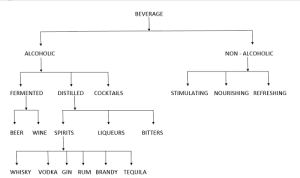Botulism- Botulism is a rare and potentially life-threatening illness caused by a toxin produced by the bacterium Clostridium botulinum. This bacterium is commonly found in soil, and its spores can survive in various environments. Botulism can occur when the spores of Clostridium botulinum germinate and produce the botulinum toxin under certain conditions.
There are several forms of botulism:
- Foodborne botulism: This is the most common form of botulism and occurs when a person ingests food that has been contaminated with the botulinum toxin. Improperly canned or preserved foods, especially low-acid foods like vegetables and meats, can be a source of contamination.
- Infant botulism: This form primarily affects infants who are less than one year old. It occurs when infants ingest Clostridium botulinum spores, which can be found in honey or soil. The spores can grow and produce the toxin inside the infant’s digestive tract.
- Wound botulism: This form occurs when Clostridium botulinum spores enter a wound, germinate, and produce the toxin. It is more common among individuals who use intravenous drugs.
- Inhalation botulism: This is a rare form of botulism that can result from inhaling aerosolized botulinum toxin, often in a laboratory or bioterrorism context.
The botulinum toxin is one of the most potent neurotoxins known to humans. It affects the nervous system by blocking nerve signals to muscles, leading to muscle weakness and paralysis. Symptoms of botulism typically begin with weakness in the muscles of the face, including difficulty swallowing and speaking, and can progress to paralysis of the respiratory muscles, which can be life-threatening.
Treatment for botulism typically involves hospitalization and the administration of an antitoxin to neutralize the toxin. Supportive care, such as mechanical ventilation to assist with breathing, may also be necessary. Early treatment is crucial, as botulism can be fatal if left untreated.
Prevention of botulism includes practicing proper food preservation and canning techniques, avoiding giving honey to infants under one year of age, and taking precautions to prevent wounds from becoming contaminated with soil or other potential sources of Clostridium botulinum spores.
What is Botulism
Botulism is a rare but serious illness caused by a neurotoxin produced by the bacterium Clostridium botulinum. This bacterium is found in soil and can produce the botulinum toxin under certain conditions. The toxin is extremely potent and can lead to paralysis, including paralysis of the respiratory muscles, which can be life-threatening.
Botulism can occur in several forms:
- Foodborne botulism: This is the most common form and typically results from consuming improperly canned or preserved foods that have been contaminated with the botulinum toxin. Low-acid foods like vegetables, meats, and fish are more prone to contamination. Symptoms usually begin with weakness, blurred vision, and difficulty swallowing and can progress to muscle paralysis.
- Infant botulism: This form primarily affects infants under one year of age. It occurs when infants ingest Clostridium botulinum spores, which can be found in soil or honey. The spores can grow and produce the toxin inside the infant’s digestive tract, leading to symptoms such as constipation, weak cry, and muscle weakness.
- Wound botulism: This form occurs when Clostridium botulinum spores enter a wound and produce the toxin. It is more common among individuals who use intravenous drugs.
- Inhalation botulism: This is a rare form that results from inhaling aerosolized botulinum toxin, which can happen in a laboratory or bioterrorism setting.
The symptoms of botulism typically start with muscle weakness, double vision, and difficulty speaking and swallowing. In severe cases, it can lead to paralysis of the respiratory muscles, requiring mechanical ventilation to assist with breathing. Early treatment with antitoxin is essential to prevent further progression of the illness.
Preventing botulism involves proper food safety practices, including safe canning and preserving techniques, avoiding the consumption of honey by infants under one year old, and maintaining good wound hygiene to prevent wound botulism. Botulism is a medical emergency, and anyone suspected of having the illness should seek immediate medical attention.
Who is Required Botulism
Botulism is not a person or individual; it’s a medical condition caused by the botulinum toxin produced by the bacterium Clostridium botulinum. People can contract botulism when they ingest food or substances contaminated with this toxin or when the bacterium itself grows and produces the toxin in the body under certain conditions. Botulism affects people who are exposed to the toxin or the bacterium and can occur in various forms, including foodborne botulism, infant botulism, wound botulism, and inhalation botulism. It is a serious condition that can lead to muscle weakness, paralysis, and potentially life-threatening complications if not treated promptly.
When is Required Botulism

Botulism can occur at any time when individuals are exposed to the botulinum toxin, which is produced by the bacterium Clostridium botulinum. Here are some situations when botulism can occur:
- Foodborne Botulism: This can happen when people consume contaminated foods, often improperly canned or preserved items, where the bacterium has produced the botulinum toxin. It can occur at any time when such contaminated food is consumed.
- Infant Botulism: This primarily affects infants under one year of age and can occur when infants ingest C. botulinum spores, often found in soil or honey. It can happen when a baby is exposed to these sources.
- Wound Botulism: This form of botulism can occur when C. botulinum spores enter a wound and produce the toxin. It can happen after a wound becomes contaminated with the spores.
- Inhalation Botulism: This is rare and can occur if someone inhales aerosolized botulinum toxin, typically in a laboratory or bioterrorism setting.
Botulism can happen at any time when the conditions for toxin production or exposure to the bacterium are met. It’s important to practice good food safety, avoid giving honey to infants under one year old, maintain proper wound hygiene, and take necessary precautions to prevent exposure to the bacterium or its toxin. If you suspect someone may have botulism or are experiencing symptoms, seek immediate medical attention, as botulism is a medical emergency.
Where is Required Botulism
If you are asking about where botulism can occur, it can happen in various locations and situations depending on the type of botulism:
- Foodborne Botulism: This can occur anywhere in the world when people consume contaminated foods. Improperly canned or preserved foods are common sources of foodborne botulism. It can happen in homes, restaurants, or any place where food preparation and storage take place.
- Infant Botulism: This can occur wherever infants are exposed to C. botulinum spores. It is more common in areas where honey is commonly consumed and in regions where the spores are prevalent in soil.
- Wound Botulism: This can occur wherever wounds are present and become contaminated with C. botulinum spores. It is often associated with drug use and may occur in various locations.
- Inhalation Botulism: This is a rare form of botulism that can occur in a laboratory or bioterrorism setting, where aerosolized botulinum toxin is released.
Botulism is not tied to a specific location but rather to specific conditions and exposures that lead to the production or ingestion of the botulinum toxin. It’s important to be aware of the risk factors and take precautions to prevent botulism, regardless of where you are. If you have concerns about botulism or suspect someone may be affected, seek immediate medical attention.
How is Required Botulism
Botulism is a medical condition caused by the ingestion of the botulinum toxin, which is produced by the bacterium Clostridium botulinum. The toxin affects the nervous system and can lead to muscle weakness, paralysis, and potentially life-threatening complications if not treated promptly. Here’s how botulism typically occurs:
- Ingestion of Toxin: In foodborne botulism, people become infected by eating foods that are contaminated with the botulinum toxin. The toxin is usually produced when C. botulinum bacteria grow in improperly canned or preserved foods. When these contaminated foods are ingested, the toxin is absorbed into the bloodstream, leading to the symptoms of botulism.
- Infant Botulism: In infant botulism, infants ingest C. botulinum spores, which can be found in soil, dust, or honey. Inside the infant’s immature digestive tract, the spores can grow and produce the toxin. This form of botulism doesn’t occur in adults because the mature digestive system can prevent the spores from growing.
- Wound Botulism: Wound botulism occurs when C. botulinum spores enter a wound, typically in cases of contaminated wounds. Inside the wound, the spores can germinate and produce the toxin.
- Inhalation Botulism: This is a rare form of botulism that can occur when individuals inhale aerosolized botulinum toxin, usually in a laboratory or bioterrorism context.
The symptoms of botulism typically start with muscle weakness, double vision, and difficulty speaking and swallowing. In severe cases, it can lead to paralysis of the respiratory muscles, requiring mechanical ventilation to assist with breathing.
Treatment for botulism involves administering botulism antitoxin as soon as possible to neutralize the toxin. Supportive care may also be necessary, including mechanical ventilation to assist with breathing. Prompt medical attention is crucial because botulism can be life-threatening if left untreated.
Preventing botulism involves practicing proper food safety techniques, avoiding the consumption of honey by infants under one year old, maintaining good wound hygiene, and taking precautions to prevent exposure to the bacterium or its toxin.
Case Study on Botulism
Foodborne Botulism
Patient Information:
- Name: Sarah
- Age: 35
- Gender: Female
- Medical History: No known medical conditions
Case Presentation: Sarah, a 35-year-old woman, recently attended a family reunion where she consumed several servings of home-canned green beans. The green beans had been preserved by a family member as part of a traditional family recipe. Shortly after the reunion, Sarah began to experience symptoms.
Symptoms:
- Day 1: Sarah developed blurred vision and felt weakness in her facial muscles. She also had difficulty swallowing.
- Day 2: Her symptoms worsened, with progressive muscle weakness affecting her limbs. She could no longer speak coherently.
- Day 3: Sarah’s condition deteriorated further. She experienced shortness of breath and difficulty in moving her chest muscles.
Hospital Admission: Alarmed by the rapid progression of her symptoms, Sarah’s family brought her to the emergency department of a local hospital on Day 3.
Clinical Examination: Upon arrival at the hospital, Sarah was admitted to the intensive care unit (ICU). A physical examination revealed the following:
- She was conscious but unable to speak.
- She had severe muscle weakness and flaccid paralysis.
- Her breathing was shallow and labored, requiring immediate intubation and mechanical ventilation.
Diagnosis: Based on her symptoms and clinical presentation, as well as the information about her recent consumption of home-canned green beans, the medical team suspected botulism.
Laboratory Testing: To confirm the diagnosis, samples of Sarah’s blood, stool, and the remaining green beans from the family reunion were sent to the laboratory for analysis. Laboratory tests detected the presence of botulinum toxin in both her blood and the green beans.
Treatment: Sarah was administered botulism antitoxin promptly after the diagnosis was confirmed. The antitoxin helps neutralize the circulating toxin. She was also placed on a mechanical ventilator to support her breathing.
Outcome: Over the course of several weeks, Sarah slowly improved with intensive medical care, including physical therapy to regain muscle strength. Eventually, she was weaned off the ventilator and regained her ability to speak and swallow.
Follow-Up: Sarah’s recovery was monitored closely, and she underwent rehabilitation to regain full muscle strength. The hospital staff educated her and her family about the importance of safe food handling and avoiding homemade canned goods without proper preservation techniques.
Discussion: This case study highlights the seriousness of foodborne botulism, which can result from consuming improperly preserved or canned foods. Prompt medical intervention, including the administration of antitoxin and respiratory support, is crucial for a successful outcome. Public awareness of proper food safety practices is essential in preventing such cases.
White paper on Botulism
Table of Contents
- Executive Summary
- An overview of the key points and findings of the white paper.
- Introduction
- Definition of botulism.
- Brief history and discovery of botulism.
- Importance of understanding botulism.
- Types of Botulism
- Foodborne botulism.
- Infant botulism.
- Wound botulism.
- Inhalation botulism.
- Causative Agent: Clostridium botulinum
- Characteristics of Clostridium botulinum.
- Spore formation and germination.
- Toxin production.
- Symptoms and Clinical Presentation
- Early symptoms.
- Progression of the disease.
- Complications and potential outcomes.
- Diagnosis
- Clinical evaluation.
- Laboratory tests.
- Differential diagnosis.
- Treatment
- Administration of antitoxin.
- Supportive care and management.
- Mechanical ventilation.
- Prevention
- Food safety practices.
- Avoiding honey for infants.
- Wound care and prevention.
- Epidemiology
- Global incidence and prevalence.
- High-risk groups and regions.
- Recent outbreaks.
- Research and Developments
- Ongoing research efforts.
- Vaccination and new treatments.
- Public Health Response
- Surveillance and reporting.
- International cooperation.
- Conclusion
- Summary of key takeaways.
- The importance of awareness and prevention.
- References
- Cite all sources and references used in the white paper.
Conclusion
A white paper on botulism would require extensive research, scientific data, and a thorough review of existing literature to provide a comprehensive understanding of this rare but potentially life-threatening condition. It should aim to educate healthcare professionals, policymakers, and the general public about the causes, symptoms, diagnosis, treatment, and prevention of botulism. Furthermore, it should emphasize the importance of ongoing research, public health efforts, and awareness to reduce the incidence of botulism and mitigate its impact on affected individuals and communities.





